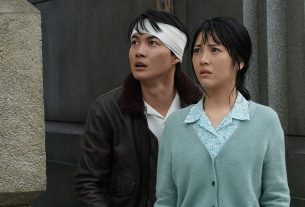
I absolutely HAVE to share this awesome place with the world, not only because it was one of the most daring road trips I had ever taken with my sons, but because it opened my eyes to a slice of America that I didn’t know existed. I had a friend and her three sons with me also, and I don’t think I would have done this trip otherwise.
The Ashfall Fossil Beds State Historical Park isn’t necessarily near anything. We endured a 360-mile round trip in one day — six hours worth of driving to and from our then-home in Bellevue, Nebraska — for about two hours of exploration in a very rural part of northeastern Nebraska.
We had learned about the Ashfall Fossil Beds from a trip to Morrill Hall, the Nebraska state natural history museum in Lincoln, which I wrote about late last year in my post about state museums.
Why is it called “Ashfall”?
Once upon a time, over 12 million years ago, a volcanic eruption at the Bruneau-Jarbridge Caldera near what is now Yellowstone National Park cast a massive cloud of ash eastward over a very large area that included land that now takes up the entire state of Nebraska. Up to 2 meters-deep worth of ash descended very quickly over the existing prairie suffocating all life in its path. You may have heard of other smaller ashfalls, such as Mount St. Helen’s in 1980.
Then, 2.4 million years ago, a glacier coming down from the northeast pushed much of the soft sediment westward as far as near the Ashfall area…before retreating. So what you end up with is a “pile” of fossils near Ashfall. This makes this a gold mine in the world of paleontology.

Ashfall Fossil Beds State Historical Park includes a visitor’s center with educational exhibits and hands-on activities perfect for kids.


After the visitor’s center, guests are encouraged to visit the Hubbard Rhino Barn. This was so incredibly cool. In 1971, a baby rhinoceros skull was found in a field on the property. Continued exploration revealed that there was a whole field of rhino skeletons nearby. Read more in the photo below.

The Hubbard Rhino Barn was completed in June 2009, and its intent was to enclose a large dig area so it could be explored year-round. We were told that work on the enclosed area would take over 30 years, so don’t worry, there will be plenty to see for years to come.



Did the kids enjoy it? I think my sons and my friend’s youngest son weren’t as excited about the artifacts as my friend’s oldest two sons, who were around 11 and 16 years old at the time. The older two had many questions for the scientists and thoroughly explored the hands-on activities at the Visitor’s Center. I’d recommend this trip for ages 10 and up, although younger fossil fans could enjoy it too.
An observation I made: the parking lot was quite full, considering we were in a remote location. Upon chatting with other guests at the park, my friend and I learned that we were among several families who were on “fossil vacation”. One of the families had driven from southern California, in fact!
How fascinating! I learned there was a “Fossil Freeway” that runs north-south between Rapid City, South Dakota and Kimball, Nebraska, dotted with paleontology-related attractions. Mammoth Site at Hot Springs, South Dakota and Scottsbluff National Monument in Nebraska are two of the more popular attractions. The trip to Ashfall is a little bit out of the way on U.S. Highway 20, but I think it’s worth it!
Have you ever taken a fossil vacation? If so, where did you go? If no, do you think it’s something you’d like to do one day?





If you enjoy this, you may want to take a little jaunt north and check out the Mammoth Site in Hot Springs, SD. It was a sinkhole that they have been excavating.
Yes, I mentioned this at the bottom of the post, that nearby to Ashfall is the “Fossil Freeway” anchored to the north by Mammoth Site. I’m sorry we didn’t get to visit, although my family thoroughly enjoyed Badlands National Park near there.
I’ve been to Mammoth Site twice now. I really enjoy the history and the way they’ve excavated the site to show the different layers. I’ll have to check some of these other sites out now that I know about them! Thanks for the information.
Patricia, thanks for a great article on Ashfall. It’s always very gratifying to hear how people really appreciate and enjoy the site. Only one request: Please replace every instance of archeology and archeologist with paleontology and paleontologist! Archeology deals with human remains and artifacts only, not fossils! It’s a common mistake, but paleontologists are a bit chagrined by being called archeologists…it’s a little like an astronomer being called an astrologist! 🙂
We have added a new kid’s dig since your visit, where kids can “excavate” exact replicas (casts) of actual fossil skeletons found in the Rhino Barn. And, of course, new discoveries are showing up regularly, including a skeleton of a rare member of the dog family and several new rhinos.
Thanks again for your article!
Gregory Brown
Chief Preparator
Vertebrate Paleontology
University of Nebraska State Museum
Thank you Mr. Brown for your comment. I can’t believe I made that slip up on the name of your profession! I have always considered the differences in the two disciplines like meteorology and climatology…and I can certainly appreciate being mislabeled as one profession when you’re actually an expert in the other. I intend to make those edits.